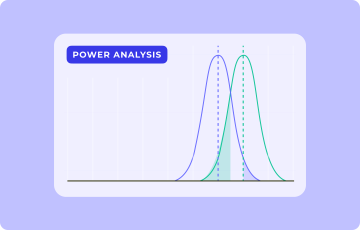
5 key A/B testing and personalization trends for e-commerce and retail in changing times
COVID-19 and the lockdowns it triggered accelerated the trend to digital in retail and e-commerce. With physical stores shuttered, we’ve seen a boom in online sales that is expected to engrain new shopping habits moving forward.
All of this is leading to greater competition in the market, and rising expectations from customers when it comes to the experience they expect. Fail to provide consumers with an optimized, tailored experience and they’ll take their business elsewhere, hitting loyalty and revenues. That makes A/B testing and personalization central to success in the online retail world.
To assist e-commerce players we reached out to our customers and analyzed the market to build the Kameleoon E-commerce & Retail ebook. In it, we see 5 key trends to focus on for the year ahead:
1 Online competition is growing massively, putting the focus on the experience
There’s now an estimated 1.3 million retailers selling online in North America, according to PipeCandy, catering for an audience of 230.5 million shoppers. Factor in that Amazon is expected to be responsible for half of all online sales in 2021, and it shows the competitiveness of the e-commerce landscape. Retailers that previously relied on brick and mortar stores have refocused around online, investing heavily. Brands without their own shops that sold through department stores have been forced to create or scale their own e-commerce sites. Overseas players are increasingly entering the sector, selling low-cost goods via marketplaces.
All of these factors further increase competition - while the overall e-commerce pie may be growing, you need to work harder on delivering excellent online customer experiences if you are to secure a share, whatever niche you operate in.
2 E-commerce audiences are changing
Headline sales figures have grown for e-commerce, but more importantly the pandemic has brought completely new audiences online. Groups or individuals that may have shunned online retail in favor of a trip to the store have been forced to adopt e-commerce. And the majority won’t be going back - our own research found that 29% of U.S. consumers will increase their long-term use of digital channels in the future.
Consequently your online audience is fragmenting and changing. You might have a wide range of visitors to your site, from savvy, experienced e-commerce shoppers who know exactly what they want through to first timers who want more information, help and reassurance before checking out their cart. Retailers need to be able to cater for all of these groups - but unlike in a store, you can’t size up a visitor and deliver a personal experience just based on how they look when they walk through the door. Providing online personalization is therefore critical to success.
3 Digital is part of the omnichannel experience
While brick and mortar retail spending was expected to drop by 14% in 2020 according to eMarketer, it doesn’t mean that consumers are solely interested in digital moving forward. They want an omnichannel approach that meets their specific needs at that time. 85% of shoppers increased their use of curbside pickup due to the pandemic, again creating new habits for the future. Many successful retailers and e-commerce brands have also adopted BOPIS (buy online and pick up instore).
All of this makes the job of retailers harder - they need to understand and orchestrate a whole range of customer journeys that span multiple online and offline channels. Creating a seamless and optimized process is vital, not just to retaining customers but ensuring best use of infrastructure (such as physical stores) to increase engagement and maximize efficiency. That means continually testing, experimenting and personalizing to improve the journey to attract and retain customers.
4 E-commerce is a much broader field than ever before
Five years ago, the typical e-commerce website sold a specific range of physical products - with the key selling points being better availability and pricing compared to an offline store. As the market has grown in sophistication, new categories such as Direct to Consumer (D2C) brands have appeared, selling products that you cannot buy elsewhere. All of these factors further increase the pressure on e-commerce players to deliver a tailored, optimized online experience.
Plus, consumers are becoming digital-first for all of their needs, not just physical goods. We’ve all seen the growth of online video streaming services (up 56% in the first months of the pandemic according to our research), but consumers are now taking more online classes (34% increase) and medical consultations (27% more), than before. These are completely new areas for mainstream e-commerce, meaning that successful first-movers can become the habit brand with consumers if they deliver the experience that they are looking for. And given that many new areas are focused around services rather than physical products, the customer experience becomes even more vital to success. Understanding customer needs and delivering the right experience means continually testing and improving what you offer, honing it to meet consumer requirements.
5 E-commerce customer needs (continue to) change
Not only are new groups buying online for the first time, but the needs of every visitor to your website is changing rapidly. For example, at the beginning of lockdowns, consumers overwhelmingly wanted reassurance that retailers would still be able to deliver their orders safely, either directly or via ship-to-store options. However, as time moved on, their needs have expanded - they expect safe, fast delivery as standard and are making buying decisions based on other criteria. And these criteria will be very personal - one visitor might be focused on offers or easy payment terms, while another is interested in social proof, such as reviews, before making their purchase.
Each of these customers wants to be treated as an individual, with their needs clearly understood and met - they are no longer willing to put up with a generic experience. 75% of U.S. consumers are looking for a personalized online experience - and they’ll move elsewhere if you fail to provide it.
There are solutions to optimizing your online customer experience
The U.S. ecommerce market was worth $709.78 billion in 2020 and will continue to climb in 2021 according to eMarketer. Delivering the right experience to win and retain digital customers means not just offering the right products and services at the right prices but optimizing and personalizing the experience. Even if you have tried before to achieve this, today there are proven solutions to creating better customer experience. Here are three:
A/B testing and experimentation
Optimize the overall website experience for all visitors and test and introduce new innovations to meet changing customer needs through an ongoing experimentation program. Test every element of the customer journey to ensure it aids conversion and retention in order to out-perform the competition.
Manual personalization
Segment your customers into key audience groups and deliver a tailored experience based on broad criteria such as their location, gender or previous purchases. Putting in place preset rules enables you to personalize the experience, deliver individualized messages and offers and show consumers that you understand and value their custom.
AI-driven personalization
With such a wide range of consumers now online, all with different needs and preferences, manual personalization can only take you so far. Using artificial intelligence and machine learning algorithms enables you to offer your visitors a truly personalized experience, based on real-time analysis of their behavior. This dramatically improves the experience, increases conversions and builds loyalty.
Learn more about how A/B testing and personalization can ensure your e-commerce strategy delivers on today’s key trends by downloading the Kameleoon E-commerce and Retail ebook. Illustrated with examples from leading retailers from across the e-commerce market, read the guide here.



